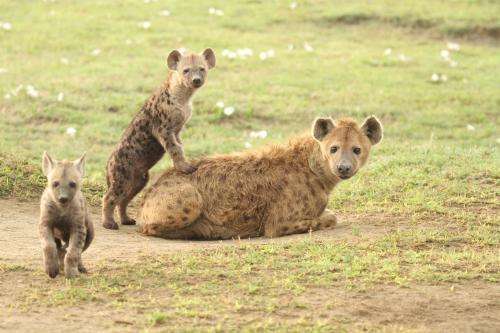New method to assess hormone metabolite concentrations in wildlife research

Measuring hormone metabolites in urine and faeces are essential for studies in wildlife conservation. Scientists from the German Leibniz Institute for Zoo and Wildlife Research (IZW) developed a new method with which they can match metabolite concentrations obtained from different measurements during long-term studies or from analyses carried out in different laboratories. The study has been published in the scientific journal "Methods in Ecology and Evolution".
How can we gain knowledge about animals that are extremely shy, maybe even dangerous or live in places difficult to access? A proven method is to examine their "left behinds". Scientists can derive much information from faeces, urine and saliva. Measurements of faecal steroid metabolite concentrations for example may allow conclusions on the animal's social status, its reproductive status and its physiological response to disturbance.
Hormone metabolite concentrations from faeces or urine are quantified using enzyme immunoassays. The accuracy of an enzyme immunoassay is influenced by certain characteristics such as the antibody (responsible to detect the correct metabolite), the characteristics of the metabolite and alterations in the test conditions that may cause a bias between measured and actual metabolite concentrations. Such differences are negligible if they remain constant for all samples analysed during a long-term study and where the main focus is on relative differences in concentrations, as for example during distinct changes of living conditions. But if the accuracy of measurements varies considerably during a long-term study when analyses were carried out in different years, results may become incomparable and may be misinterpreted. Previously, the only solution was to re-assay all samples together in one batch, which costs a lot of time and money, especially if this involves many samples. Sometimes samples are even no longer available.
The behavioural ecologists Eve Davidian, Sarah Benhaiem and their colleagues from the IZW developed a mathematical method that allows the comparison of enzyme immunological measurements even when the accuracy varies. The scientists collected about 500 faecal samples from spotted hyaenas in the Ngorongoro Crater in Tanzania as part of a long-term study that started in 1996. The accuracy of the enzyme immunoassay of faecal cortisol (so-called stress hormone) metabolites varied during different periods of examination. However, the new method allows rendering all measurements comparable with each other by using a subset of only 27 samples. "Our method standardises the concentration of hormone metabolites and can be applied to a variety of species, sample types and hormones on reasonable terms", comments Benhaiem one of the authors of the study.
This new method is interesting for long-term studies and particularly for international collaborative projects that deal with large data sets where analyses are usually performed in different labs. The new standardisation method can thereby contribute to the better understanding of complex processes, like interactions between steroid hormones, behaviour and diseases. "Thus, further insights for conservation and protection of wild animals can be gained", emphasises Davidian.
More information: "Determining hormone metabolite concentrations when enzyme immunoassay accuracy varies over time." METHODS ECOL EVOL; DOI: 10.1111/2041-210X.12338.
Journal information: Methods in Ecology and Evolution
Provided by Forschungsverbund Berlin e.V. (FVB)
















